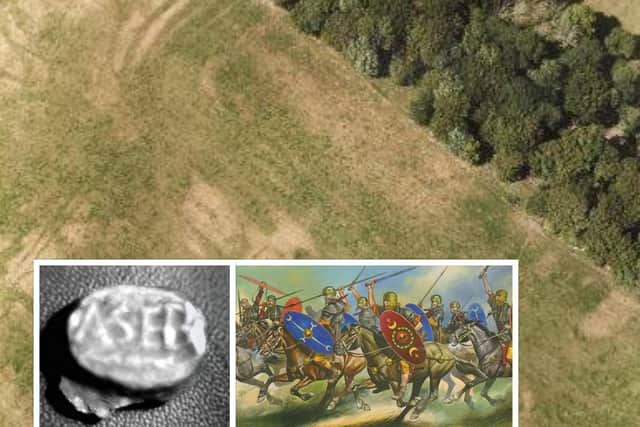It's difficult to date the Roman invasion of Clydesdale
and live on Freeview channel 276
The information comes from the Roman author Tacitus, Agricola’s son-in-law, who wrote a biography with a full and frank account of what happened.
In addition, Tacitus also wrote the Germania and a history of the period in several volumes but, unfortunately, not all have survived.
Advertisement
Hide AdAdvertisement
Hide AdFortunately, a number of other authors have written about this period. The detail in them is somewhat limited but does call into question whether Agricola was the first Roman General to set foot in Clydesdale. Experts now think PetIlius Cerialis, an earlier governor of Britain, may have taken Roman forces as far as Perthshire.


This came about as the Romans decided to punish any allies of the most powerful tribe in Northern Britain called the Brigantes.
What we do know is that the Romans also had problems with political divisions after the death of Nero which ended up in 69 AD with four men fighting to control the Empire. The result was that some units, such as the 2nd Adiutrix based in Chester, mutinied as they did not support the ultimate victor Vespasian.
There is not much evidence for the Romans establishing a fort at Castledykes prior to Agricola’s time, apart from some Republican coins, including several legionary denarii issued by Mark Antony and a single denarius struck by the Consul Quintus Flaccus.
Advertisement
Hide AdAdvertisement
Hide AdAs far as the pottery is concerned there is a solitary piece of Black Samian which was produced for a short time in York. None of these items are indications of an early Roman presence at Castledykes prior to Agricola’s time. Indeed, Republican denarii are often found in use for several hundred years after they were made as there was more silver in them.
The coin of Flaccus is, however, interesting as his grandson Valerius Flaccus wrote a book called the Argonautica comparing the Emperor Vespasian to the Greek hero Jason. Could it be that this man came to Scotland along with Vespasian’s forces and this was a keepsake that was lost? We will never know.
We do know the names of some of the people who came to Castledykes thanks to a discovery made about 35 years ago of a lead seal with the letters ASEB on it. Thanks to Professor Lawrence Keppie, it was possible to connect this item to a unit called the Ala Sebosiana – a cavalry regiment.
A decade or so afterwards, the discovery of some wooden tablets in Carlisle mentioned members of the Ala Sebosiana including Agricola’s chief adjutant. This makes Castledykes the only fort to provide definite evidence of individuals other than Agricola who were here in 79 AD.
Advertisement
Hide AdAdvertisement
Hide AdAnother piece of evidence of Agricola’s presence was the design of the gateway of one of the temporary camps surrounding Castledykes which was discovered by aerial photography. The gateways have unique hooked entrances to put the enemy at a distinct disadvantage.
We are sure that Agricola came to Castledykes and we do know that the Ala Sebosiana accompanied him.
It became the communications hub for the South of Scotland in his time here and must have had a significant impact on the economy.